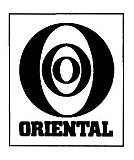 NEW SEAGULL G
NEW SEAGULL G
Fiber-based Paper
New Seagull G is the finest paper to be produced by current photographic
materials technology. On a thick, strong baryta base paper, images with
sharp, vivid highlights, deep shadows and between them unlimited shades
of gray are produced which have received the highest praise from photographers
around the world. New Seagull G is a black and white paper which
has reached the peak of quality and has achieved the highest reputation.
New Seagull G paper can be used for archiving, original prints, exhibition
prints and for other special uses.
Safelights
For general-use enlargers with yellow-green filters, 15W bulbs should
be used and the safelight should be at least one meter from the enlarger.
New Seagull G is a high sensitive paper and should not be exposed
more than 10 minutes. Be careful with prints after they have been exposed.
Exposure
Correct exposure times depend on the characteristics of the negatives
being printed. To get good final prints, various exposure levels should
be tested first.
Sensitivity and gradient
| Grade |
ISO Speed |
ISO Range |
| No.2 |
P640 |
R100 |
| No.3 |
P400 |
R80 |
| No.4 |
P200 |
R60 |
Standard processing conditions
| Process |
Processing temperature |
Processing time |
| Development |
20+_ 0.5 C |
90~120 sec. |
| Stop bath |
18~21 C |
15~30 sec |
| Fixing |
18~21 C |
5~10 min. |
| Washing |
18~25 C |
approx. 90 min. |
| Drying |
Natural Drying |
Developing
(1 ) Developers
Almost all of the widely used commercially available
developers for use with regular printing paper can be used
(D-72, etc.) and will retain their usual characteristics.
| Product |
Dilution |
Temperature |
Time |
| D-72 |
1 :2 |
20 C |
90 sec. |
| ID-62 |
1 :1 |
20 C |
90 sec. |
| D-52 |
1 :1 |
20 C |
120 sec. |
The developing times and temperatures will consist of the various combinations
shown in the table above. However, temperatures can be as high as 30 C.
In such cases, the developing time is about 1/3 of the length indicated
in the table above. When development takes place at 20 C and exceeds
a period of ten minutes, fogging occurs and the tonal gradations disappear
and the unique features of New Seagull G are lost.
(2) Exposure and development times
New Seagull G has a relatively wide exposure range.Compared with standard
exposure times, they range from 1/2 to 2 times. When these longer or shorter
times are used, development times will become shorter or longer and no
problems will be encountered.
| 1/2 exposure |
D-72 (1:2) |
20 C |
8 min. |
| Standard exposure |
D-72 (1 :2) |
" |
90 sec. |
| 2X |
D-72(1:2) |
" |
30 sec . |
Stop bath
For the stop bath, a solution of 1 .5% of glacial acetic acid is used.
Time: 15 to 30 seconds.
| Water |
1 liter |
| Glacial acetic acid |
15 ml |
Fixer
(1 ) Fixer:
Prepared fixer is recommended but, if you are preparing your own fixer,
either use an acid hardening fixer containing sodium thiosulfate (hypo)
or a rapid fixer containing ammonium thiosulfate.
(2) Conditions
Fixing is either a one-bath or a two-bath process.
| One bath 20 C |
5 -10 minutes |
| Two-bath 20 C |
3 - 5 minutes (for each bath) |
Keep the total fixing time to ten minutes or less. If the time exceeds
10 minutes, there will be bleaching of the shadow image and a slight softening
of gradation. If you use a rapid fixer containing ammonium thiosulphate,
fixing time should be kept to within 60~120 seconds (20 C)
Types of paper
| Type |
Base paper |
Weight |
Texture |
Tint |
Image tone |
Grade |
| G |
Fiber-based |
Double weight |
Glossy, smooth |
White |
Jet black |
2~4 |
Washing
Prints should be washed for 90 minutes. While they are in the bath,
take care that the prints do not become placed one on top of the other.
If you use a hypo-cleaning agent, washing time can be reduced by half.
For shortening washing time, after fixing, wash in running water for five
minutes. Then use a 2% anhydrous sodium sulfite solution at 20 C for 2~3
minutes and wash in running water for 45 minutes.
Drying
For drying New Seagull G prints, natural drying should be used. Place
the prints on a clean surface and drain the water off. Then dry them by
placing them on glass or some other suitable surface. If you are using
a Ferro-type dryer, dry the prints using a wetting agent to remove drops
of water and then slowly dry at surface temperatures of 50 C or less. If
the prints are dried too rapidly, the Ferro-type dryer works less effectively
and the maximum density tones of the image will be affected. If you have
used a rapid fixer containing ammonium thiosulphate, you should not use
a Ferro-type dryer.
Toning
New Seagull G prints can be toned using in a wide variety of
ways. They are not easily damaged by contaminants and the intensity of
the image is seldom lowered. However, it is important to remember that
is it better to use a new non hardening fixer and use a hypo-cleaning agent.
If the objective is to store photographic images for long periods of
time, selenium toners are recommended which further enhance the contrast
of the shadow tones and lengthen the life of the photographic image.
Storage
Always store photographic paper in a cool, dry place. It is also effective
to put a desiccant in a package which has been opened to keep the paper
dry. The paper should be used quickly after the package has been opened.
Be careful to avoid exposing the paper for long periods to a safelight,
or letting the emulsion side come into contact with fingers.
| New Seagull G Characteristic curve |
Spectral sensitivity |
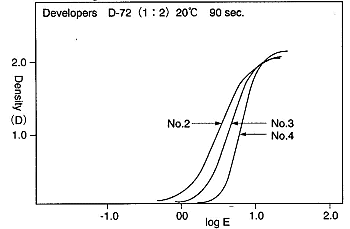 |
 |
New Seagull G No.2
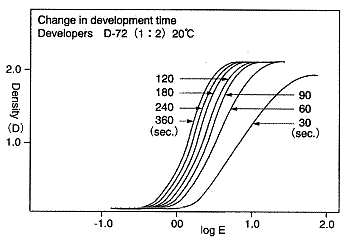 |
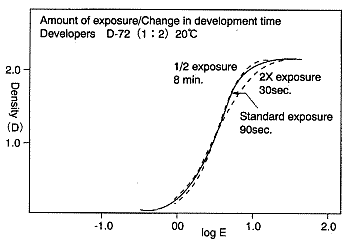 |
New Seagull G No.3
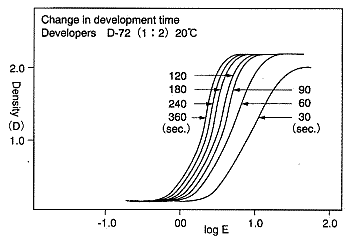 |
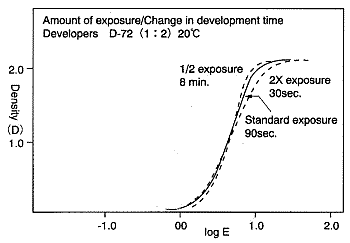 |
|





